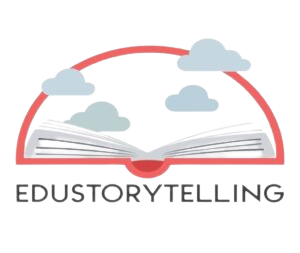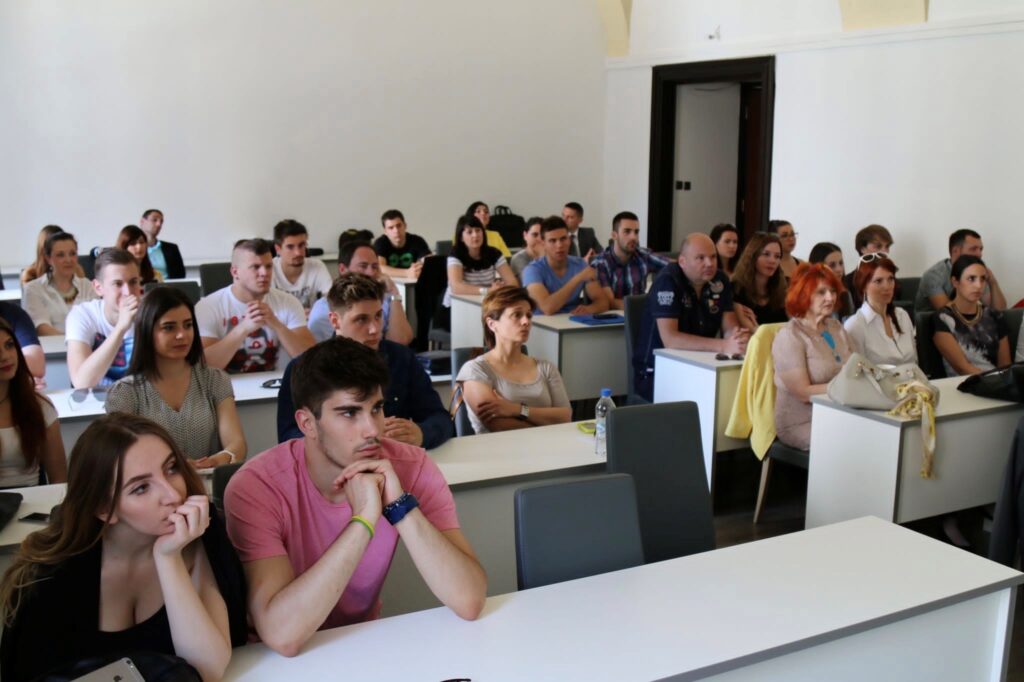
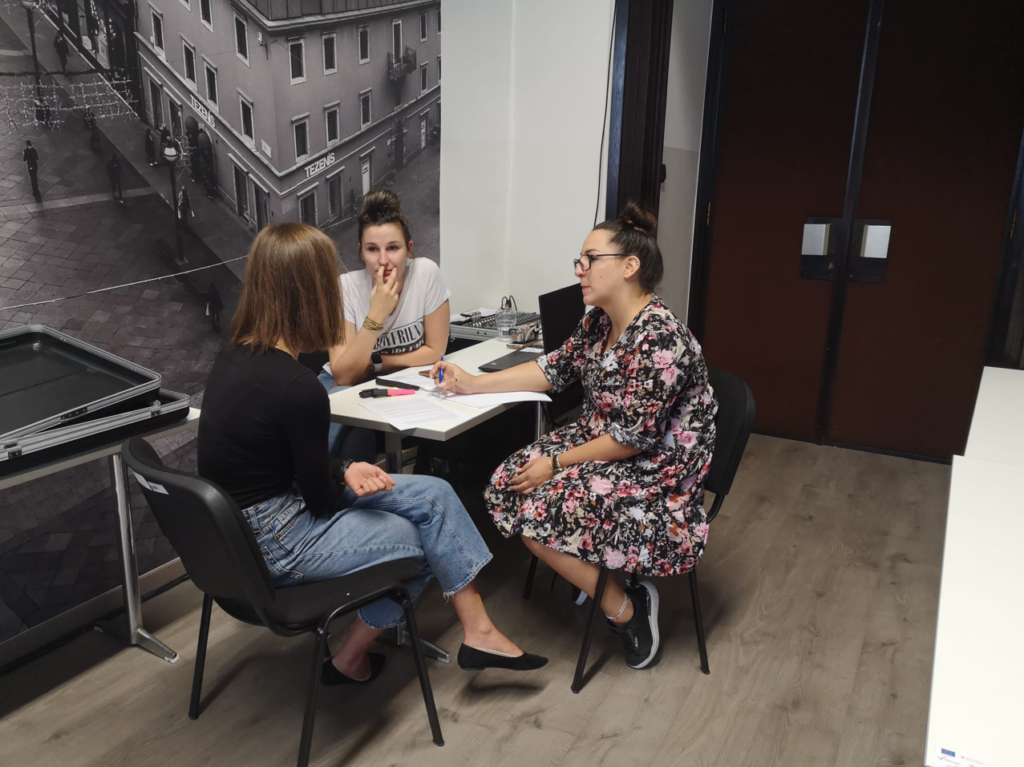
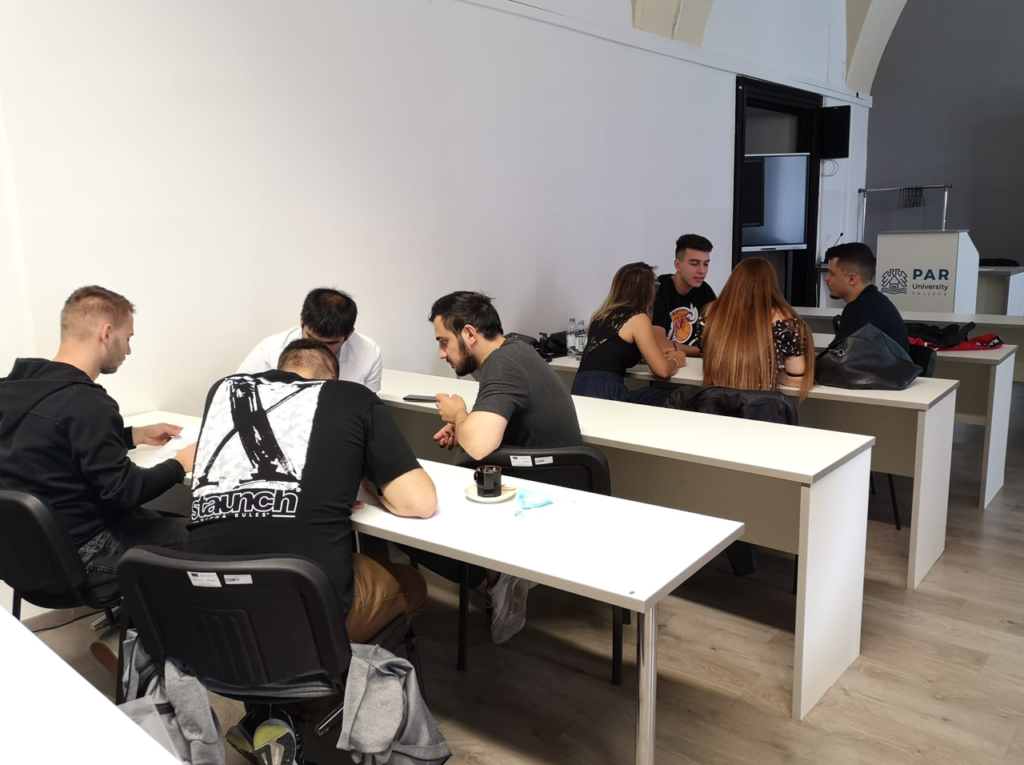
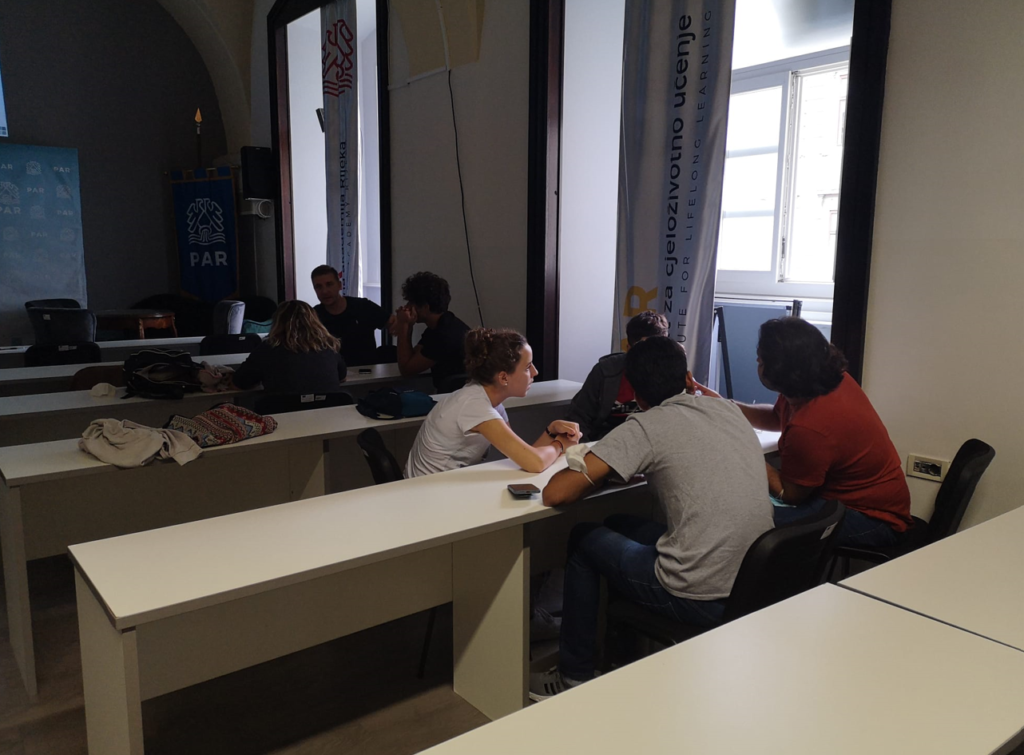
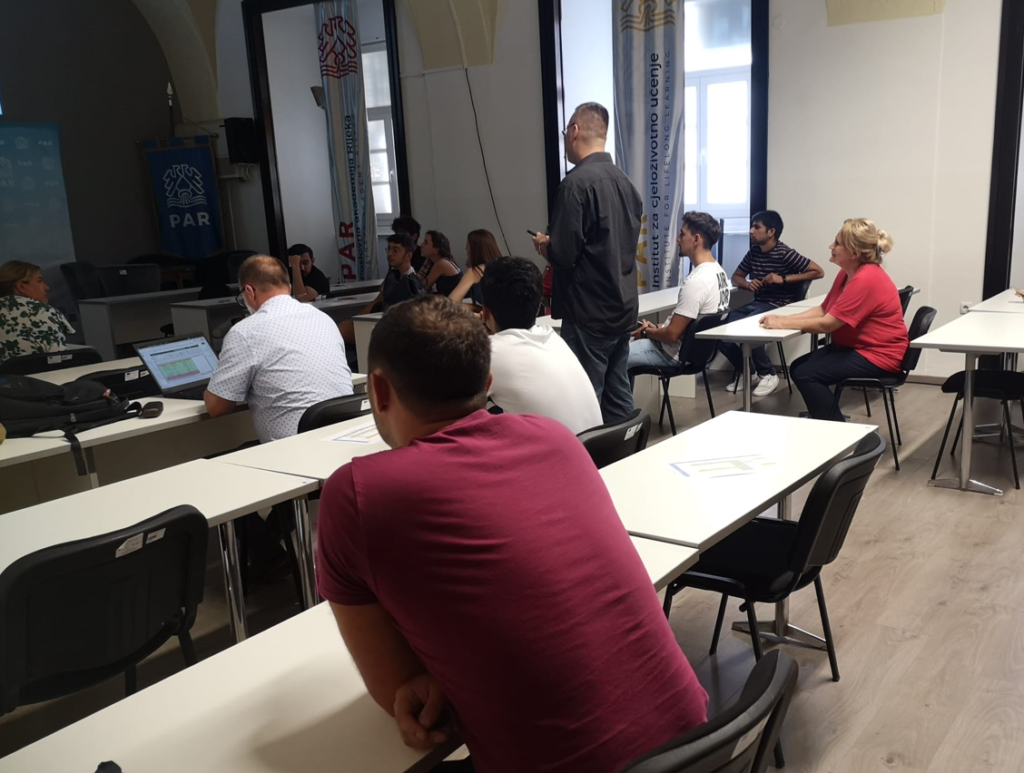
A multiplier event for the EduStorytelling project was held at PAR University College on Friday, May 27th 2022.
The aim of the event was to introduce the general public to the project and promote its results, for the purposes of dissemination and hopefully generating some interest in upscaling.
The invitation was shared through PAR’s regular promotion channels (website, email) and in total there were 30 registered people in attendance. The participants of the event had varying professional backgrounds, primarily in the areas of education and adult learning, entrepreneurship, marketing and business management. Additionally, we invited a number of PAR’s employees and students to participate in the workshops (they are not included on the participant list and were involved primarily to learn about the project and try out the exercises).
The event was started with an introduction to the project, its objectives, as well as the involved partners, and then we proceeded to present all three intellectual outputs, with allotted time for questions and feedback from the audience. After the presentation of IO3, we organised a workshop which involved several selected activities from the training handbook/MOOC. To that end, we split the participants into smaller groups in several classrooms to facilitate the activities more easily.
As the time restraints would not allow us to complete an entire module with the participants, we selected a few exercises that could be completed with minimal equipment in a relatively short timeframe but allow for a high degree of expression and creativity. ‘The story behind my name’ from Module 4/5 and ‘Introduce yourself through data’ from Module 10 were used as icebreakers. The participants then did the activities ‘The story behind my last picture’, ‘Telling and listening to a story’ (Module 4), and ‘Rewrite a story’ (Module 9).
In the last part of the event, we had a reflection session where the participants provided feedback about the activities and the overall project. We encouraged the group to exchange their opinions and brainstorm ideas for how they could utilise storytelling in their respective professions. Some of them also provided examples of how they already use storytelling and similar techniques (mostly those working in education and marketing).
Since the group was diverse in terms of professions, we did not focus on one single aspect of the curriculum, but instead wanted to show the participants that the modules are flexible for adaptation and could be utilised in different contexts and with diverse target groups. The feedback was predominantly positive and several attendees requested a copy of the training handbook so that they could further explore the curriculum.
